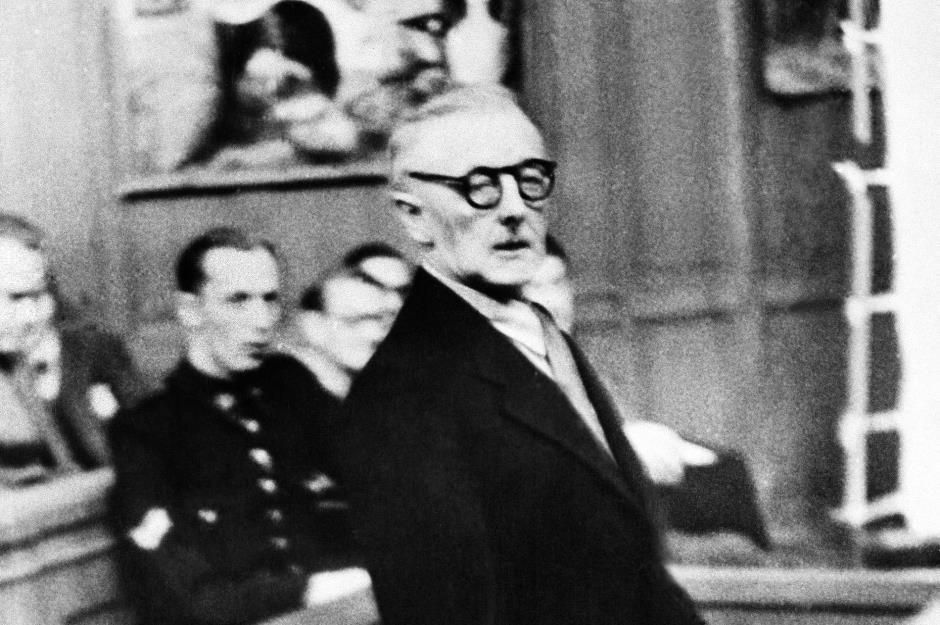Master forgers who made millions fooling the world
Fakes that made a fortune
They say imitation is the highest form of flattery. But it can also be lucrative work if you can pass off a fake worth a fortune as the real thing.
Read on to see some of the most high-profile master forgeries around. All dollar values in US dollars.
Han van Meegeren
Dutch painter and portraitist van Meegeren wasn't successful as an original artist, but blossomed as a forger of Dutch Golden Age masterpieces. He developed a technique to simulate centuries-old dried oil paint, and specialised in faking Vermeers, exploiting the Dutch master’s small known body of work to occasionally ‘discover’ new pieces.
In 1942 he sold a ‘Vermeer’ – Christ with the Adulteress – to Nazi number two Hermann Göring for $625,000 at the time, or $7 million (£5.6m) today.
Han van Meegeren
John Myatt
John Myatt
In 1995 he was arrested by Scotland Yard and was sentenced to one year in prison in 1999 for conspiracy to defraud, but only served four months. Since his release, he has made it as an artist in his own right and one of his reproductions of famous pieces – a copy of Monet’s Water Lilies – fetched over $26,244 (£20,000). Pictured is a copy of his 'original fake' of Claude Monet's Water Lilies which can be found on his website johnmyatt.com.
Walter Keane
Walter Keane
For decades Walter took credit from his talented artist wife Margaret (pictured), who was left slaving away for 16 hours a day to create ‘his’ masterpieces. In the end, the con was outed by Margaret and she was awarded $4 million (£3.05 million) in compensation from her ex-husband. Unfortunately, Walter had drunk away the fortune. In 2014, a film about their lives was released entitled Big Eyes.
Wolfgang Beltracchi
In 2004, actor Steve Martin bought what he thought was an original artwork by German-Dutch modernist Heinrich Campendonk entitled Landscape With Horses from a Parisian gallery. He paid a whopping $850,000 (£648,000). What he had actually bought was not a Campendonk original, but part of an elaborate scam by mastermind Wolfgang Beltracchi.
Wolfgang Beltracchi
Landscape with Horses (pictured) was one of 44 paintings that Beltracchi's gang – his wife Helene, her sister Jeanette and accomplice Otto Schulte-Kellinghaus – sold over a decade. Beltracchi claims the forgeries sold for millions of dollars. In 2011 Beltracchi was jailed for six years and his wife for four. In his website, Beltracchi claims that "from a penal perspective [the] works are described as forgeries. From an artistic point of view each painting is an independent, original work."
Elmyr de Hory
Elmyr de Hory's Portrait of a woman' in the style of Amedeo Modigliani
The forger was eventually caught, but took his own life before being extradited to France for trial. By then a book and film based on his life had made him a celebrity. Some of his works are still in circulation today; his fake Modigliani (one is pictured here) and Monet pieces were auctioned off. Before his death de Hory insisted he had never signed his forgeries – a vital detail as painting in the style of an artist is not a crime, only signing a painting with another artist's name makes it a forgery.
The Greenhalgs
Over a 17-year period between 1989 and 2006, Shaun Greenhalgh (left) along with his brother and elderly parents, George (centre) and Olive (right), duped museums, auction houses and private buyers internationally into buying his forged sculptures, paintings and rare artefacts. The family gang netted nearly $1.3 million (£1 million) through the scam. Shaun produced replicas of the likes of Barbara Hepworth, Paul Gauguin, and LS Lowry, but the artwork he was most famous for was the Amarna Princess.
The Greenhalgs
Michelangelo
Michelangelo
The sculpture made its way to the collection of a cardinal when it was discovered as a fake. But there’s a happy end to the story; the cardinal saw Michelangelo’s talent and allowed him to keep the money from the sale. The rest, as they say, is history!
Now discover some 'masterpieces' the experts can't agree on

